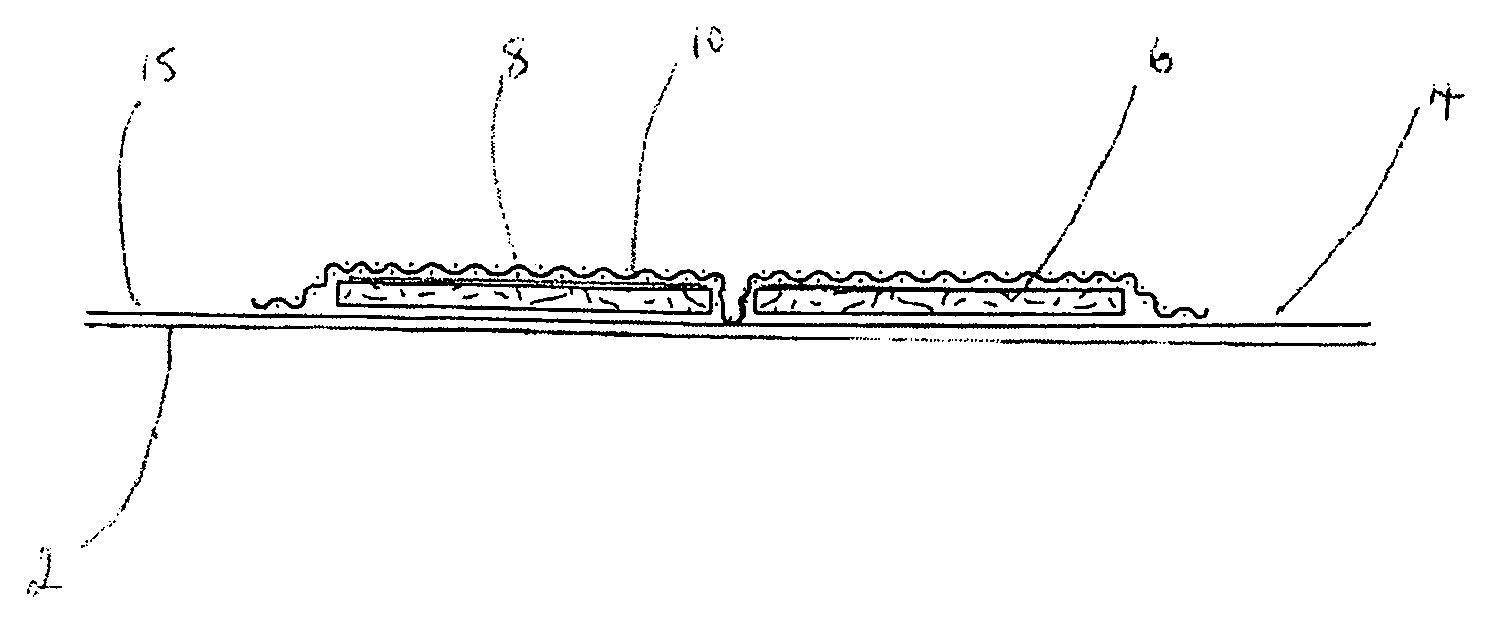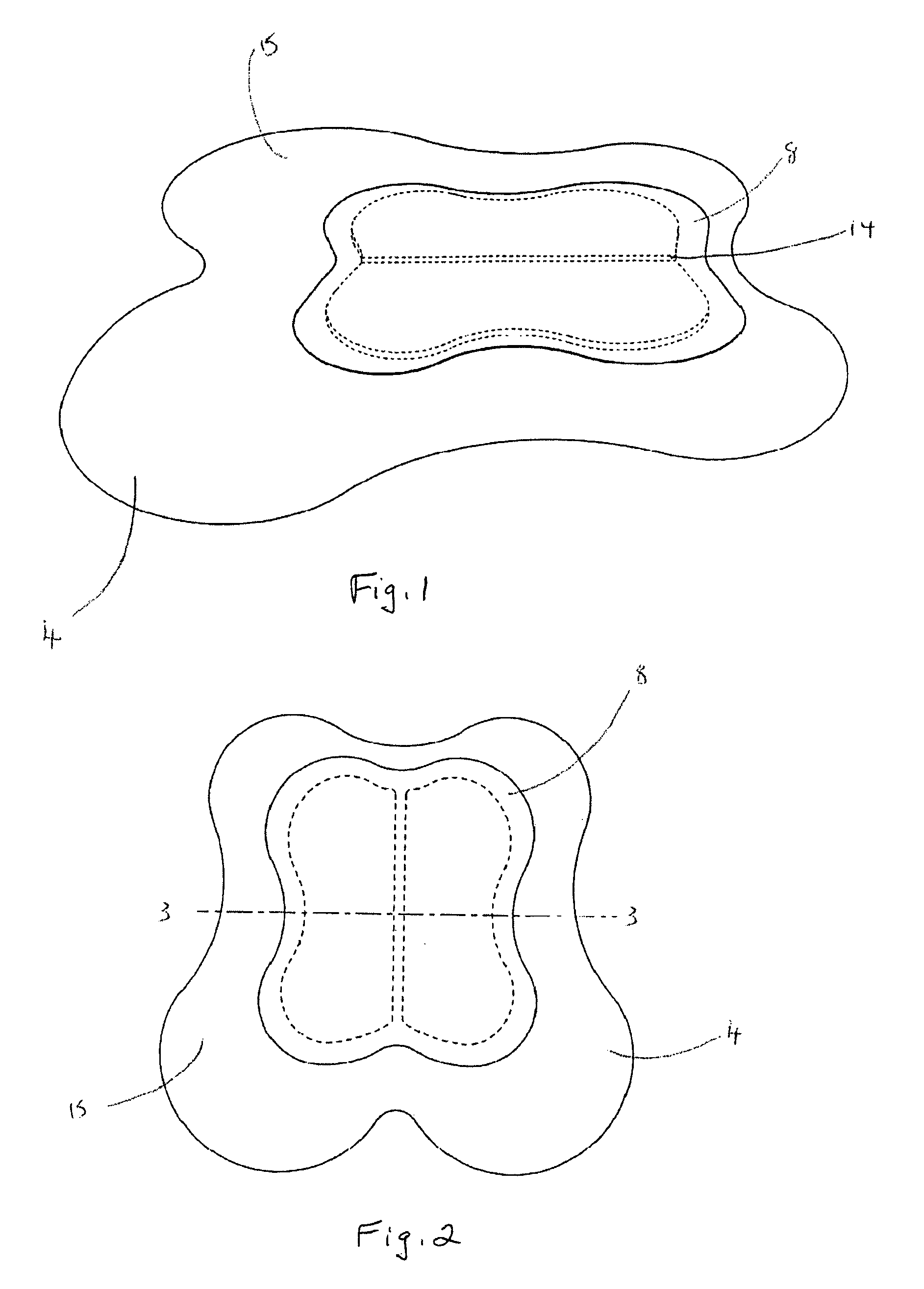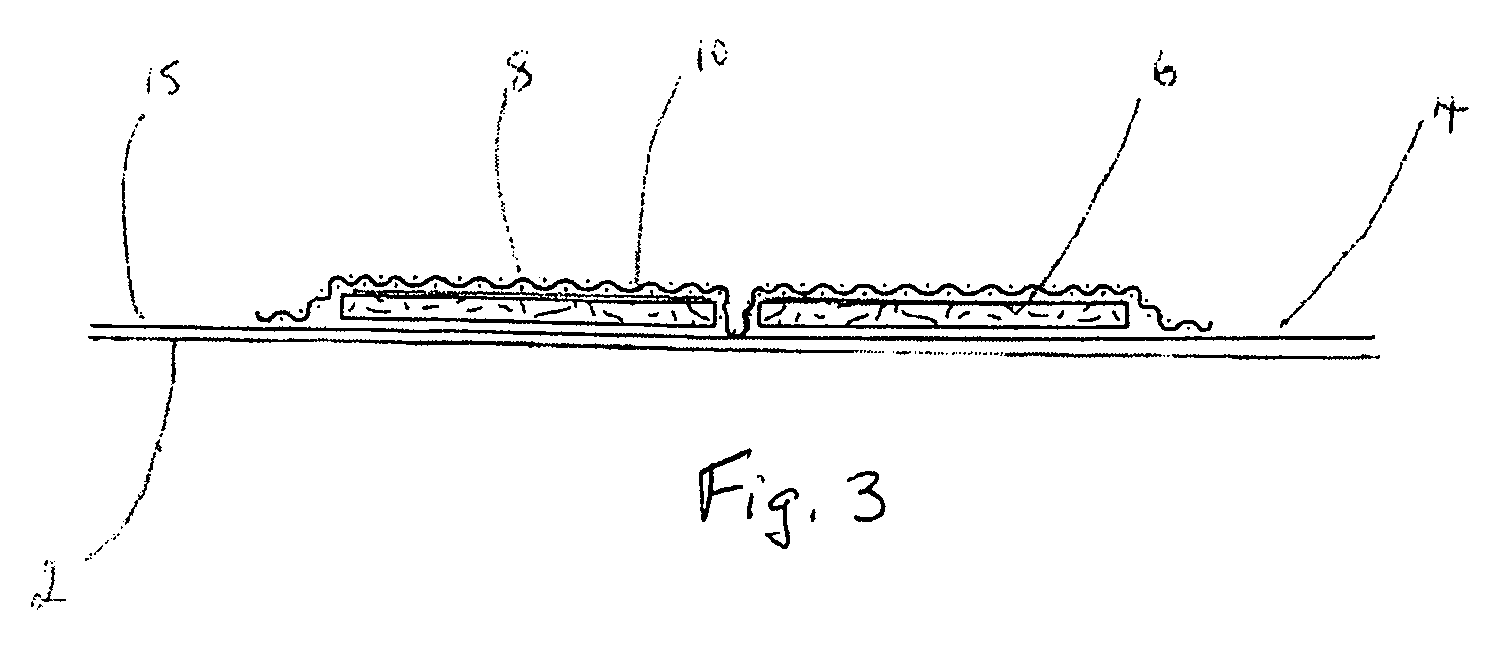Wound dressing
a wound dressing and wound technology, applied in the field of wound dressings, can solve the problems of not allowing the folding of the dressing in the manner, difficult and time-consuming to apply the dressing to the contoured body area of the patient, and difficult to achieve the effect of non-traumatic dressing removal, high fluid handling capacity, and convenient us
- Summary
- Abstract
- Description
- Claims
- Application Information
AI Technical Summary
Benefits of technology
Problems solved by technology
Method used
Image
Examples
Embodiment Construction
[0048]Referring now to FIGS. 1, 2 and 3, an adhesive multi layered wound dressing according to the invention comprises a transmission layer 2, an adhesive layer 4, an absorbent pad 6 and a wound contacting layer 8.
[0049]The wound contacting layer 8 is made from 35 gm2 of a non-woven, hyrdoentangled fabric comprising gel forming fibers.
[0050]The absorbent pad is made from 210 gm2 pad of gel forming fibers such as those described in WO93 / 12275 and sold as the product Hydrocel™ (Acordis). In an alternative embodiment the absorbent pad is a 75 / 25 blend of Hydrocel™ and Lyocell™. In a yet further embodiment the absorbent pad is a 50 / 50 blend of Hydrocel™ and Lyocell™.
[0051]The adhesive layer 4 is a blend of one or more water soluble hydrocolloids and one or more low molecular weight polyisobutylenes. In an alternative embodiment the adhesive layer may be a polyamide web.
[0052]The transmission layer is a polyurethane foam / film laminate.
[0053]In the adhesive wound dressing of FIGS. 1, 2 an...
PUM
 Login to View More
Login to View More Abstract
Description
Claims
Application Information
 Login to View More
Login to View More - R&D
- Intellectual Property
- Life Sciences
- Materials
- Tech Scout
- Unparalleled Data Quality
- Higher Quality Content
- 60% Fewer Hallucinations
Browse by: Latest US Patents, China's latest patents, Technical Efficacy Thesaurus, Application Domain, Technology Topic, Popular Technical Reports.
© 2025 PatSnap. All rights reserved.Legal|Privacy policy|Modern Slavery Act Transparency Statement|Sitemap|About US| Contact US: help@patsnap.com



